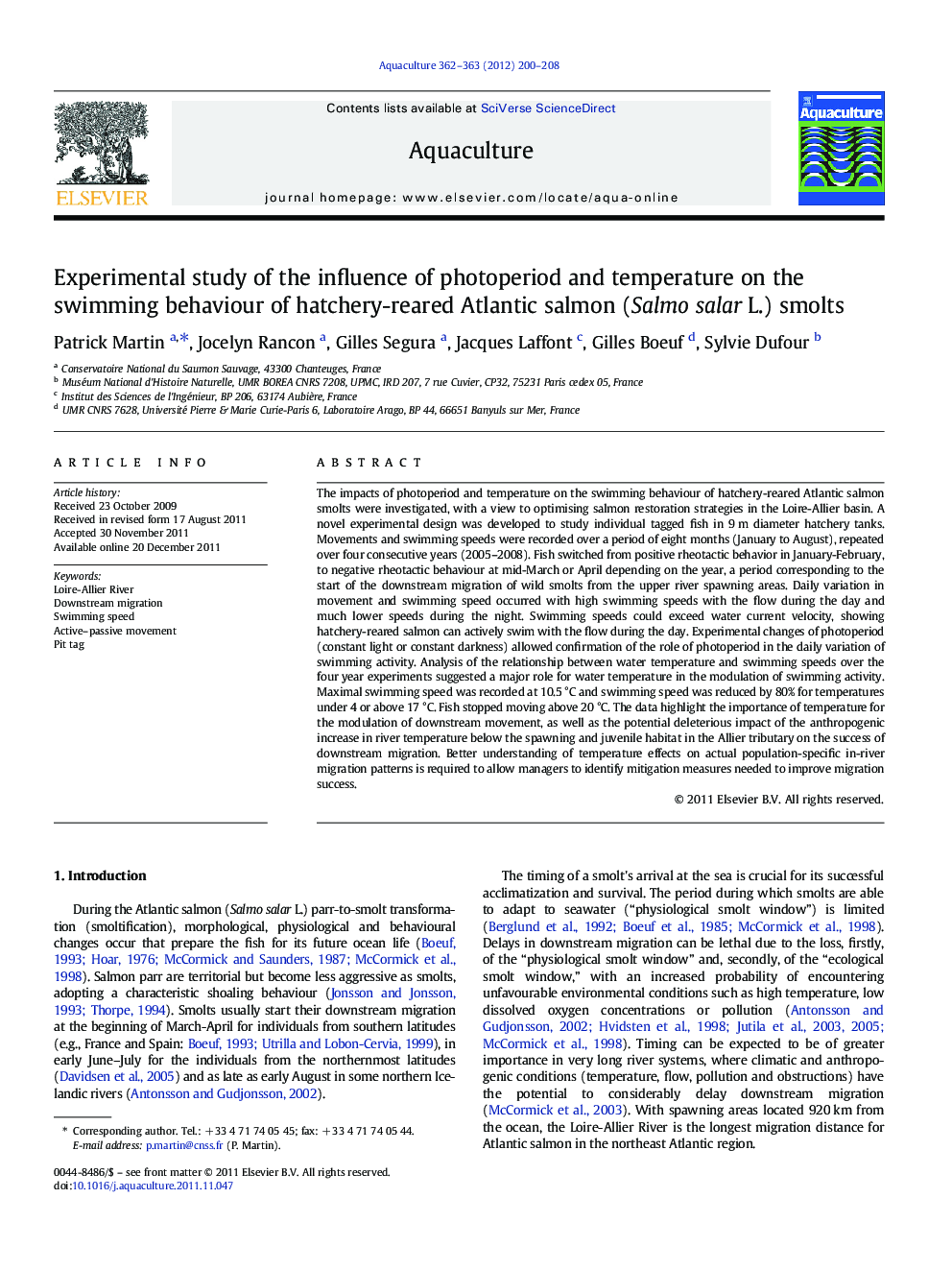| کد مقاله | کد نشریه | سال انتشار | مقاله انگلیسی | نسخه تمام متن |
|---|---|---|---|---|
| 2422340 | 1552885 | 2012 | 9 صفحه PDF | دانلود رایگان |

The impacts of photoperiod and temperature on the swimming behaviour of hatchery-reared Atlantic salmon smolts were investigated, with a view to optimising salmon restoration strategies in the Loire-Allier basin. A novel experimental design was developed to study individual tagged fish in 9 m diameter hatchery tanks. Movements and swimming speeds were recorded over a period of eight months (January to August), repeated over four consecutive years (2005–2008). Fish switched from positive rheotactic behavior in January-February, to negative rheotactic behaviour at mid-March or April depending on the year, a period corresponding to the start of the downstream migration of wild smolts from the upper river spawning areas. Daily variation in movement and swimming speed occurred with high swimming speeds with the flow during the day and much lower speeds during the night. Swimming speeds could exceed water current velocity, showing hatchery-reared salmon can actively swim with the flow during the day. Experimental changes of photoperiod (constant light or constant darkness) allowed confirmation of the role of photoperiod in the daily variation of swimming activity. Analysis of the relationship between water temperature and swimming speeds over the four year experiments suggested a major role for water temperature in the modulation of swimming activity. Maximal swimming speed was recorded at 10.5 °C and swimming speed was reduced by 80% for temperatures under 4 or above 17 °C. Fish stopped moving above 20 °C. The data highlight the importance of temperature for the modulation of downstream movement, as well as the potential deleterious impact of the anthropogenic increase in river temperature below the spawning and juvenile habitat in the Allier tributary on the success of downstream migration. Better understanding of temperature effects on actual population-specific in-river migration patterns is required to allow managers to identify mitigation measures needed to improve migration success.
► Monitoring of hatchery smolts swimming speed revealed specific nycthemeral behaviour.
► Active down flow movement during daytime and very little movement during the night.
► Maximal swimming speed was recorded at 10.5 °C.
► Swimming speed was reduced by 80% for temperatures under 4 or above 17 °C.
Journal: Aquaculture - Volumes 362–363, 28 September 2012, Pages 200–208